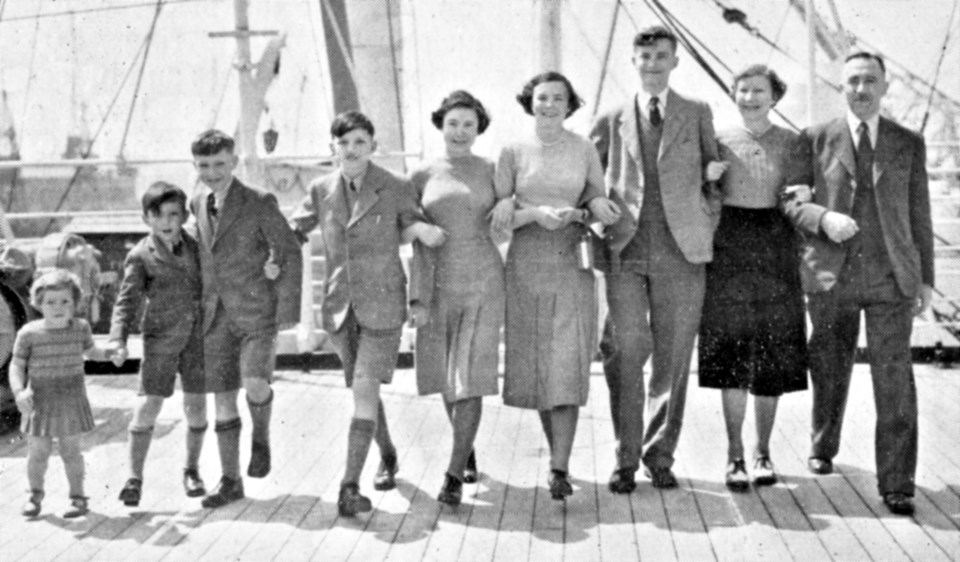In the battered photo, my family is stepping into the future on the deck of The Georgic—the children in order from two to 17 years of age and then our parents. I’m second youngest.
It was 65 summers ago, and we were sailing on The Georgic from England to Halifax to become Canadians. On the voyage, my father gave the keynote speech at a special banquet. It told the story of the ship.
I listened and learned The Georgic was a motor vessel that began life as a passenger liner in 1932 but became a troop ship in World War II. In 1941, German aircraft bombed it at anchor south of the Suez Canal. Ammunition stores exploded, and it burned and sank.
Incredibly, it was re-floated a few months later and towed 1,500 miles to “British India,” where my future father was chief executive of the Karachi Electric Supply Company. In 1942, to help the war effort, his electricians restored the motors and everything else electrical.
After further work in Bombay (now Mumbai), The Georgic was a troop ship again. After the war, it was refitted as a passenger liner once more, enabling our Atlantic voyage in 1952.
The story ended, “And that was how the Georgic came to be known as ‘the ship that lived again’.”
In 1958, our family came to Bowen, largely as seasonal residents, always as loyal Islanders on the north shore of Mannion Bay.
In 1959, Dad retired young for health reasons, and he took up sculpting. He’d discern latent form in Bowen driftwood and carve exquisite sculptures from it in his boathouse studio, looking out at the bay, energized by its fresh smell, sights and sounds.
One of Dad’s sculptures that’s still on Bowen is the main crucifix at St. Gerard’s Church, carved entirely in one piece from a cedar driftwood log from Mannion Bay.
In essence, the driftwood was like the sunken shipwreck—seemingly just navigation hazards, but with much value when given a chance.
Dad died in 1976. Only four of us in the Georgic photo are still alive, and we all conserve and restore in our own ways.
With Mannion Bay, I’m simply a vocal supporter of Bruce Russell and Bonny Brokenshire as they team with council and community to restore the natural treasure.
I see a Georgic connection, slightly in the bay’s sunken vessels but mainly in the clear thinking, resolve and goodwill to restore together for the common good.
When I look across the recovering bay and ahead to what’s become possible, I imagine a fitting end to its story: “And that is how it came to be known as the bay that lived again.”
Jim Wright is Past President of the Garden City Conservation Society and a Friend of Mannion Bay.



